Have you been wondering about growing Bocking 14 comfrey in your garden or backyard? Maybe you’re intrigued by its reputation for being a versatile, hardy, and highly beneficial plant. But how do you get started? How tall will it grow? What makes Bocking 14 comfrey different from other varieties? In this article, we’ll cover everything you need to know to successfully grow and care for this amazing plant. Whether you’re interested in its medicinal properties, soil benefits, or its role in permaculture, we’ve got you covered.
What is Bocking 14 Comfrey?
Before diving into the growing process, let’s first understand what makes Bocking 14 comfrey special. Comfrey (Symphytum officinale) is a hardy perennial herb that’s been used for centuries for its various health benefits and gardening uses. The Bocking 14 variety is a specific type of comfrey, developed for its non-invasive nature. Unlike the traditional comfrey, Bocking 14 doesn’t self-seed, making it much easier to manage in a garden setting.
Why Choose Bocking 14 Comfrey?
Bocking 14 is known for its deep taproot, which helps it thrive in poor soil conditions and drought-prone areas. It grows rapidly and produces large, nutrient-rich leaves, which make it a favorite among gardeners looking to use it as a natural fertilizer or for composting. Plus, its leaves are often used in making herbal teas, salves, and other medicinal preparations. This hardy plant also attracts beneficial insects like bees and butterflies, making it an excellent choice for pollinator-friendly gardens.
Benefits of Growing Bocking 14 Comfrey
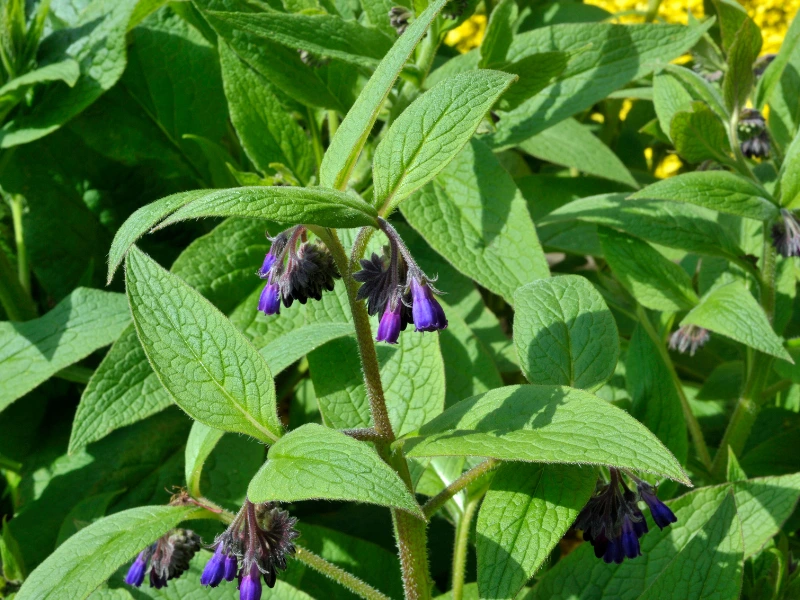
1. Medicinal Uses
Comfrey is widely recognized for its healing properties. It contains allantoin, which helps promote cell regeneration, making it effective in treating minor wounds, bruises, and even sprains. The Bocking 14 variety is particularly favored for making comfrey oil and herbal poultices.
2. Soil Health and Fertilizer
One of the biggest benefits of growing Bocking 14 comfrey is its ability to improve soil quality. The plant’s deep roots help break up compacted soil, improving soil aeration. Additionally, as it decomposes, comfrey makes an excellent addition to your compost pile, enriching it with essential nutrients like potassium, nitrogen, and phosphorus.
3. Animal Feed
Comfrey has long been used as an animal feed. It’s a rich source of vitamins and minerals, making it a great addition to the diet of livestock. Its leaves are also used to feed chickens, cows, and even goats, offering a nutritious boost.
4. Erosion Control
The deep root system of Bocking 14 comfrey helps prevent soil erosion, particularly in areas prone to heavy rainfall or wind. It acts as a natural barrier, stabilizing the soil and promoting plant growth.
How to Grow Bocking 14 Comfrey
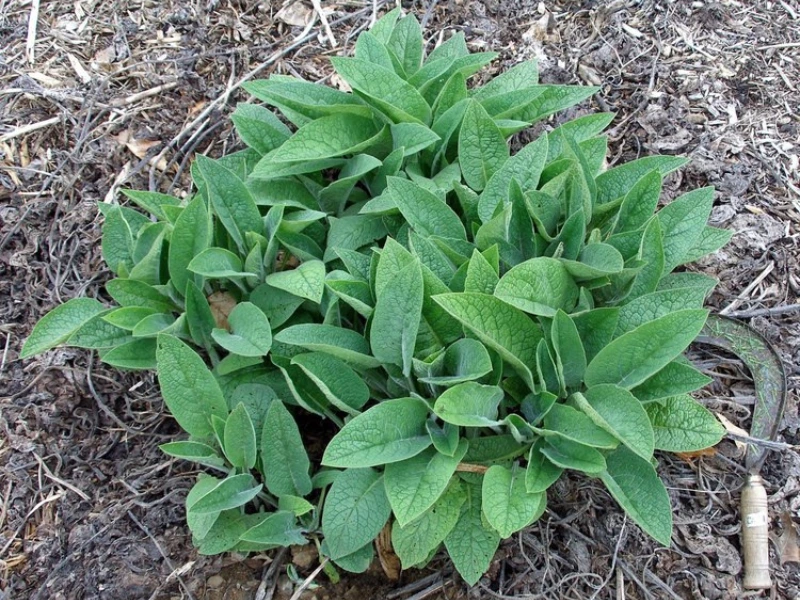
If you’re considering adding Bocking 14 to your garden, the good news is that it’s relatively easy to grow. Here are the key steps to get started:
1. Choose the Right Location
Bocking 14 comfrey thrives in full sunlight but can tolerate partial shade. It prefers well-drained, loamy soil but is relatively adaptable to different soil types. To ensure the best growth, choose a spot that offers at least 6 hours of direct sunlight per day.
2. Planting Bocking 14 Comfrey
Planting Bocking 14 comfrey is simple. You can start from root cuttings or crowns (a small section of the root). Here’s how you can plant it:
-
Dig a hole about 6 inches deep.
-
Place the root cutting in the hole, ensuring it’s facing downward.
-
Cover it with soil and water thoroughly.
3. Watering and Fertilizing
Comfrey is relatively drought-tolerant, but it will benefit from regular watering, especially during dry periods. Be sure to keep the soil moist but not waterlogged. As for fertilizing, comfrey doesn’t need much but can benefit from a little organic compost or liquid fertilizer during its growing season.
4. Pruning and Harvesting
To maintain healthy growth, prune Bocking 14 regularly, cutting back the leaves to encourage new growth. You can harvest the leaves as needed for composting, herbal uses, or feeding animals.
5. Winter Care
Comfrey is cold-hardy and can survive the winter in most climates. It will die back in the fall but will re-emerge in the spring. Mulch around the base of the plant to protect it from extreme temperatures, and remove any dead foliage to promote fresh growth.
How Tall Will Bocking 14 Comfrey Grow?
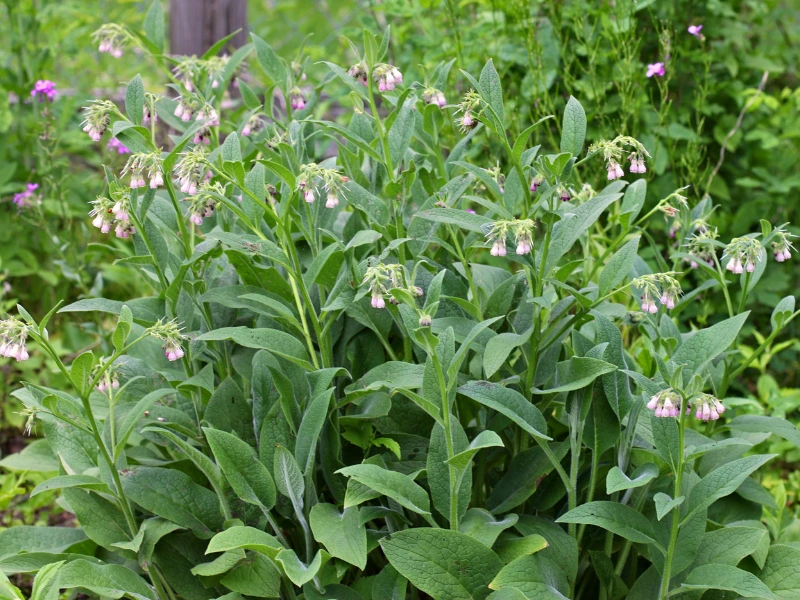
One of the most common questions asked by gardeners is, “How tall will Bocking 14 comfrey grow?” Well, Bocking 14 can grow quite tall—typically reaching heights of 2 to 4 feet. Some plants may even grow taller, depending on environmental factors such as soil quality, sunlight, and watering conditions.
Factors That Influence Growth:
-
Soil quality: The richer the soil, the healthier the plant will grow.
-
Watering: Consistent watering can help the plant reach its full height potential.
-
Temperature: Warmer climates tend to encourage taller growth, though Bocking 14 is still hardy in cooler areas.
-
Spacing: When planting, give each comfrey plant plenty of space to spread out.
In general, Bocking 14 comfrey is a fast-growing, large plant that can take up a significant amount of space. Make sure to plant it where it has room to grow tall and wide.
Common Problems When Growing Bocking 14 Comfrey
While Bocking 14 is generally low-maintenance, it’s not entirely immune to pests and diseases. Here are a few common issues you might face:
1. Pests
Comfrey can sometimes attract pests like aphids, slugs, and snails. To combat this, try using natural deterrents like neem oil or diatomaceous earth.
2. Diseases
Comfrey is prone to fungal diseases like powdery mildew if it’s grown in too much humidity or if there’s poor air circulation around the plant. Ensure good spacing and avoid overhead watering to prevent this.
3. Overcrowding
Comfrey can quickly spread, so it’s essential to keep an eye on how much space the plants take up. If left unchecked, it can overshadow other plants in your garden.
How to Harvest and Use Bocking 14 Comfrey
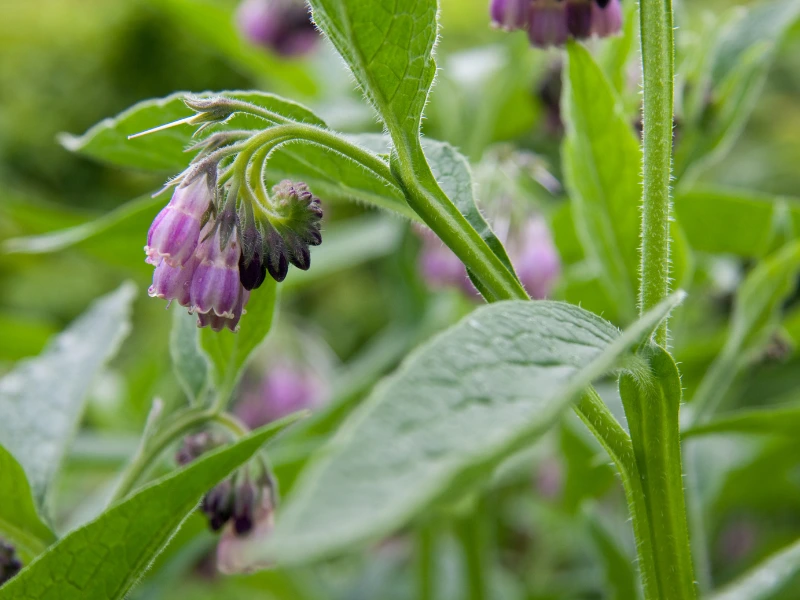
Once your Bocking 14 comfrey is established, you can start harvesting its leaves. Here’s how to do it:
-
Timing: Harvest the leaves when they’re young and tender. The best time is during the growing season before the plant starts flowering.
-
Method: Use sharp garden shears to cut the leaves, ensuring you don’t damage the plant’s root system. You can harvest up to 2/3 of the plant at a time.
The leaves can be used for making comfrey tea, comfrey oil, or even compost. As for medicinal uses, the leaves can be made into poultices for treating injuries.
Conclusion
In conclusion, Bocking 14 comfrey is an incredible plant that offers numerous benefits for gardeners, herbalists, and permaculture enthusiasts alike. From its medicinal properties to its ability to improve soil health, this hardy perennial is a valuable addition to any garden. Its ease of care, fast growth, and multiple uses make it a versatile and sustainable choice.
If you’re ready to start growing Bocking 14 comfrey, remember to provide it with the right conditions—adequate sunlight, well-drained soil, and proper watering—and you’ll soon enjoy its many rewards.
Frequently Asked Questions
-
Can I grow Bocking 14 comfrey in containers?
-
Yes, Bocking 14 comfrey can be grown in containers, though it will need a larger pot to accommodate its roots.
-
-
Is Bocking 14 Comfrey safe for pets?
-
While comfrey is safe for humans in small doses, it’s not recommended for pets, especially in large amounts, as it contains compounds that may be toxic to animals.
-
-
How often should I harvest Bocking 14 comfrey?
-
You can harvest Bocking 14 every few weeks during the growing season, but be sure to leave enough foliage for the plant to regenerate.
-
-
What can I use Bocking 14 Comfrey for?
-
Bocking 14 comfrey is used for medicinal purposes (salves, teas), as a natural fertilizer, and for animal feed. It’s also excellent for composting.
-

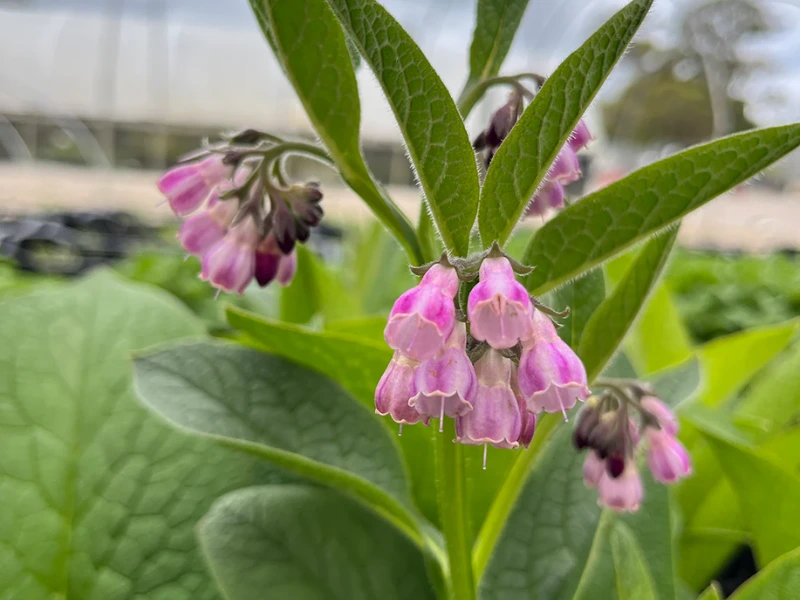
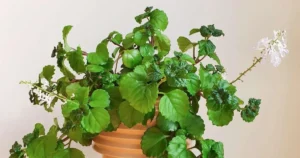
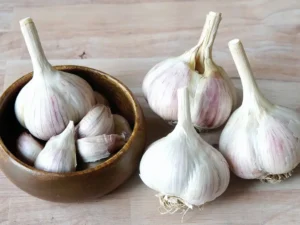


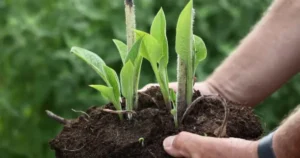

Hello! How much heat can Bocking 14 tolerate? It can get up to 115°F here and it’s very dry. I’d like to plant it in full sun if possible. Thank you!
Bocking 14 is pretty tough when it comes to heat, but the intense dryness of 115°F might be pushing the limits a bit, especially if it’s prolonged. Ideally, comfrey thrives in moderate temperatures, but with your extreme heat, it’s important to provide some protection, especially during the hottest part of the day. If you’re going to plant it in full sun, I’d recommend ensuring consistent moisture around its roots (maybe a deep mulch layer to help with that), and possibly some afternoon shade during peak heat if you can.